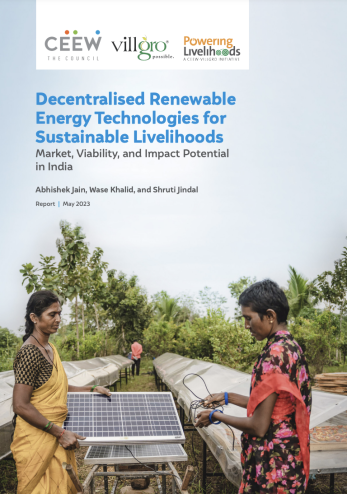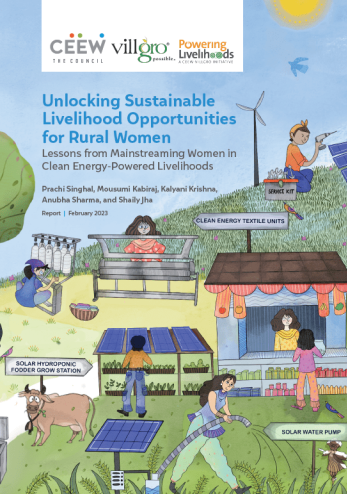Issue Brief
Making Remote Monitoring of Solar Pumps Work for States
Anas Rahman and Abhishek Jain
September 2021 | Sustainable Livelihoods
Suggested citation: Rahman, Anas and Abhishek Jain. 2021. Making Remote Monitoring of Solar Pumps Work for States. New Delhi: Council on Energy, Environment and Water.
Overview
Over the past few years, many states have mandated Internet of Things (IoT) functionality, commonly called Remote Monitoring Systems (RMS), for solar pumps supported by subsidy schemes to monitor pump performance in real-time. This study looks at the RMS deployed in Chhattisgarh, the leading state in solar pump deployment. The study examines the general state of RMS currently in use and its utilisation by the states.
Key Findings
- Based on an overview of RMS, this study found that:
- The RMS data is fragmented across multiple portals typically managed by the manufacturer of the pump controller, making it difficult for the states to get an aggregate view of all pumps installed in the state.
- The RMS portals follow significantly different data structures, making it impossible for the states to unify it under one portal, even through APIs.
- The presentation of data in the portals are not in a way that facilitates state-level analysis of pump utilisation and performance.
None of the portals is designed to facilitate state-level monitoring of solar pumps
Source: Authors’ compilation
- The study also took a closer look at the portal with the largest number of pumps to examine the quality of data. It found that:
- Even critical parameters like lat-long data and beneficiary address are either missing or incorrectly entered, which could severely hamper monitoring and corrective actions.
- Due to lack of utilisation, the number of new pumps registered in the portal has dropped drastically. Even the number of existing pumps transmitting data has significantly decreased over the years, often due to the expiration of the sim card validity.
The number of pumps logging data is consistently decreasing over the years
Source: Authors’ analysis
- There is a significant data loss at the systemic and individual-pump levels. An analysis disaggregated along the different years of the installation shows that the quality of devices is the primary determinant of data quality.
- The Union Government has recently launched the Solar Energy Data Monitoring (SEDM) platform, envisaged to be a unified platform for data from all solar pumps installed across the country. The multi-tiered structure of the portal enables effective data monitoring and utilisation across many levels.
Key Recommendations
- Adopt SEDM platform, which could solve many of the technical challenges identified by the study. With SEDM, states could migrate the existing systems to the new platform.
- Create inbuilt system checks to allow states to tackle the bad quality of data and devices at the design stage of state-level portals.
- Design an effective monitoring plan specifying the guidelines and responsibilities for converting insights from the portal to immediate action points and guiding policies.
- Immediate actions include revision of tenders, penalising of vendors etc.
- Train officials from departments other than the implementing agencies for better utilisation of data.Public access to anonymised data will also infuse great transparency into the scheme.
The Remote Monitoring System(RMS) data is fragmented across multiple portals typically managed by the manufacturer of the pump controller, making it difficult for the states to get an aggregate view of all pumps installed in the state.






